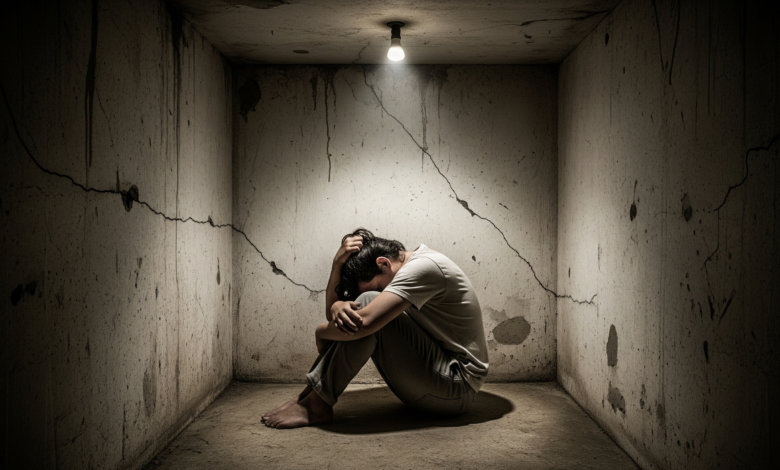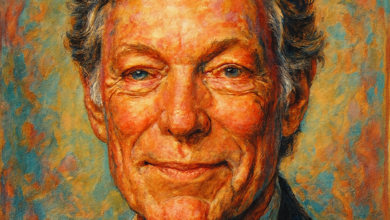Understanding Claustrophobia: Causes, Symptoms, and Treatments

What is Claustrophobia?
Claustrophobia is an anxiety disorder marked by an overwhelming and persistent fear of confined or enclosed spaces. Individuals affected by this condition often experience intense anxiety and discomfort when they find themselves in situations that restrict their movement or limit their available space. Common scenarios that may trigger claustrophobic responses include riding in elevators, being in small rooms, or waiting in long lines. For some, even wearing tight-fitting clothing can evoke feelings of anxiety.
The manifestations of claustrophobia can vary from person to person. Symptoms often encompass physical reactions such as sweating, rapid heartbeat, shortness of breath, trembling, or a feeling of impending doom. This heightened sense of panic may compel individuals to avoid certain environments, which can severely impact their daily lives. In many cases, people with claustrophobia may limit their participation in social events or work situations, leading to isolation and reduced overall quality of life.
Claustrophobia differs from general anxiety in that it specifically relates to the fear of enclosed spaces rather than a broader range of anxious feelings. While general anxiety can encompass various fears and situations, claustrophobia is narrowly focused, which means it can be more easily identifiable and treatable. It is estimated that about 5 to 7 percent of the population experiences this form of anxiety at some point in their lives, highlighting its prevalence among anxiety disorders.
Understanding claustrophobia is crucial for recognizing its impact on individuals. The condition can lead to a decline in emotional wellbeing and hinder a person’s ability to navigate daily tasks. Recognizing and addressing the fears associated with claustrophobia can lead to more effective management and improved quality of life for those affected.
Causes of Claustrophobia
Claustrophobia, an intense fear of enclosed spaces, can arise from a complex interplay of various factors. One significant contributor is biological predisposition. Research suggests that individuals with a family history of anxiety disorders are more likely to develop claustrophobia. Genetic factors may influence how effectively one manages stress and anxiety, potentially heightening the risk of experiencing this specific phobia.
Historical traumatic experiences also play a crucial role in the development of claustrophobia. Individuals who have endured past incidents involving confinement or lack of escape, such as being trapped in an elevator or held against their will, may develop lasting fears related to closed spaces. These experiences can create a conditioned response, wherein the memory of being confined triggers anxiety when confronted with similar situations in the future.
Psychological factors further contribute to the genesis of claustrophobia. For instance, those who have experienced panic attacks in confined spaces may start associating these areas with feelings of helplessness and terror. This conditioned anxiety can reinforce the fear of enclosed spaces, making the prospect of entering them increasingly daunting.
Environmental influences, particularly in childhood, also shape one’s propensity towards claustrophobia. Children raised in environments where they frequently experienced restrictions, such as being discouraged from exploring or playing freely, may develop heightened anxiety when faced with enclosed scenarios. Additionally, certain individual experiences, such as societal pressures or major life changes, can exacerbate feelings of entrapment, making it essential to consider both personal and environmental contexts when examining the causes of claustrophobia.
Symptoms of Claustrophobia
Claustrophobia, an anxiety disorder characterized by the fear of small or enclosed spaces, can manifest through a variety of symptoms that differ in intensity from one individual to another. Individuals suffering from claustrophobia often report both physical and psychological symptoms that can significantly impact their quality of life. Among the most common physical symptoms are heart palpitations and rapid breathing, which may occur even in situations perceived as safe. This physiological response is a manifestation of the body’s fight-or-flight mechanism, activated by the fear of confinement.
Another prevalent physical symptom is excessive sweating, which may be accompanied by feelings of dizziness or light-headedness. These symptoms can arise suddenly, leading to feelings of helplessness and an acute sense of panic. Psychological manifestations are equally concerning; individuals may experience overwhelming anxiety, which can precipitate a feeling of detachment from their surroundings. This detachment might lead individuals to feel as if they are observing themselves from outside their bodies, further amplifying their distress.
It is also important to note that symptoms can vary considerably among individuals. While one person may experience mild discomfort in a crowded elevator, another might become incapacitated by severe anxiety, unable to enter such a space at all. As the fear intensifies, individuals may develop avoidance behaviors, steering clear of particular situations or places they associate with their claustrophobic responses. This can have a profound effect on one’s lifestyle and social interactions, as individuals might neglect engagements or activities that could precipitate their symptoms. Understanding the multifaceted nature of these symptoms is critical for recognizing and addressing claustrophobia effectively.
Treatments for Claustrophobia
Claustrophobia, an intense fear of confined spaces, can be debilitating for those affected. Fortunately, various treatment options are available that can help individuals manage this anxiety disorder effectively. One of the most prevalent therapeutic approaches is Cognitive-Behavioral Therapy (CBT). This methodology focuses on identifying and altering negative thought patterns that contribute to the phobia. CBT has proven particularly effective in teaching individuals to challenge irrational fears and develop healthier coping mechanisms.
Another therapeutic technique employed is exposure therapy. This method involves gradually exposing patients to their feared situations in a controlled environment. Over time, exposure can help to desensitize individuals to the sensations of confinement, reducing overall anxiety associated with those scenarios. Both CBT and exposure therapy may be complemented by relaxation techniques, which can further enhance coping ability during anxiety-provoking situations.
In some cases, medication may be prescribed to help manage symptoms of claustrophobia. Commonly used medications include selective serotonin reuptake inhibitors (SSRIs) and benzodiazepines, which help to reduce anxiety levels and improve overall mood. While medication can provide relief, it is often recommended to combine pharmacological options with psychotherapy for optimal results.
In addition to these treatments, lifestyle changes can play a crucial role in the recovery process. Regular physical exercise, a balanced diet, and adequate sleep contribute to emotional well-being and can help in managing anxiety symptoms. Incorporating relaxation techniques such as mindfulness meditation or yoga may also improve a person’s ability to cope with claustrophobic triggers.
Support resources, including support groups and educational materials, can also enhance recovery for individuals struggling with claustrophobia. Connecting with others who share similar experiences can provide emotional support and valuable insights into effective coping strategies. With appropriate treatment and support, individuals can significantly improve their quality of life and manage claustrophobia more effectively.






















